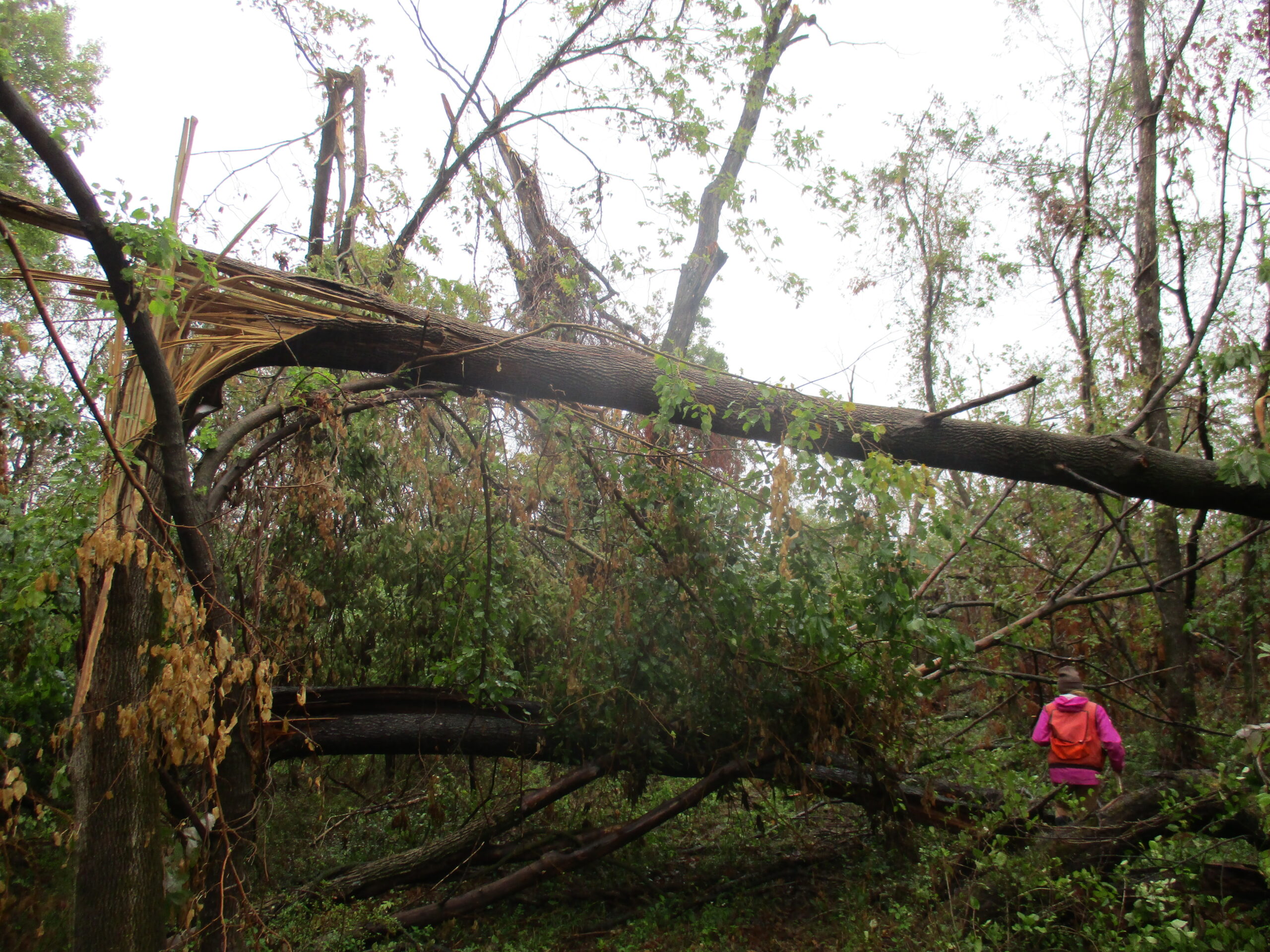By Emma Hanigan
On August 10th, a derecho—best described as an inland hurricane—swept through eastern Iowa and left behind widespread destruction. The Iowa Department of Natural Resources (DNR) estimates that 724,480 acres of forest and trees were lost across the 27 counties most directly impacted.
A derecho is a straight line wind event that produces hurricane force winds. They most often occur in summer months and can stretch many miles. Iowa’s weather forecasts didn’t see the derecho of August 10 coming—derechos are difficult to predict and strike suddenly as a rule. Fortunately, being accustomed to taking shelter from tornadoes, most Iowans were able to take cover on short notice.

“I have worked for 40 years to establish the woodland I wanted. It took 20 minutes to destroy much of that,” said Larry Wiley Bottland, an Iowa timber owner and former Iowa Tree Farmer of the Year.
The most heavily impacted areas saw sustained 70 mph winds, which can cause damage to tree branches, and over 100 mph winds in shorter bursts, which can uproot trees (called windthrow) and break tree trunks (called windsnap). Peak gusts were measured at 126 mph in Benton County, Iowa.
Twenty-seven counties were included in the state’s disaster declaration (and 16 of those were also declared major disaster areas by the federal government.) More than 1,316,800 Iowans call these 27 counties home, and most of their communities are small, rural, and underserved. Cedar Rapids, the second largest community in the state, lost more the half of its tree canopy due to the derecho and will be forced to remove upwards of 23,000 severely damaged or destroyed street trees.
“No neighborhood in Cedar Rapids or Marion was spared,” said Shannon Ramsay, President and CEO for Trees Forever. “The loss of trees is overwhelming, with very mature trees uprooted, snapped in half, and shattered across town. Small towns were also devastated, and we need all types of help from clearing to assessment of standing trees.”
Removing trees can be expensive and dangerous following a storm event. The Iowa DNR strongly recommends that residents hire a licensed arborist to inspect storm-damaged trees and a professional tree care service to ensure removals are performed safely.
The DNR is aware that demand for arborists and tree care professionals is extremely high at present. This does not mean that residents should pay exorbitant prices for tree care services (the Iowa attorney general has received complaints of derecho-related price gouging.) On the contrary, the DNR encourages residents to visit the Iowa DNR website for help in identifying and selecting a licensed arborist, inspecting trees for storm damage, and caring for newly planted trees.

“When folks from Linn County call, they aren’t saying “it’s just some tree damage.” They’re saying: ‘Mark, when we look at our timber, it is total destruction,'” said Mark Vitosh, District Forester with Iowa DNR.
There are programs to help with storm recovery and the DNR is working with its national-level partners to make this assistance available to those in need. In particular, private forestland owners are advised to contact their local USDA Farm Services Agency office regarding financial assistance. Communities engaged in tree care and canopy goals are encouraged to reach out to Iowa DNR for technical assistance and cost-share opportunities.
Emma Hanigan is the Urban Forestry Coordinator for the Iowa Department of Natural Resources. She can be reached by email at emma.hanigan@dnr.iowa.gov.

